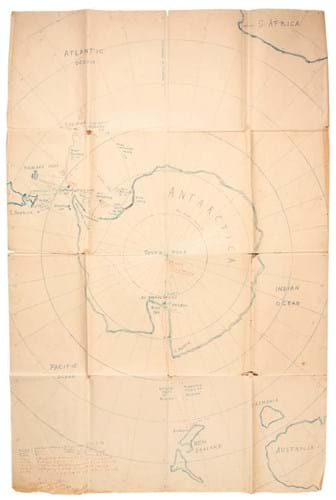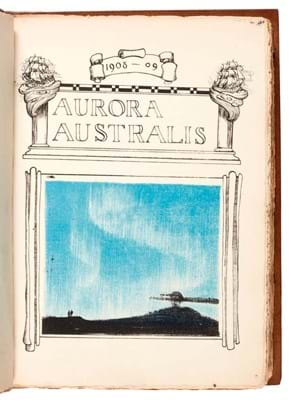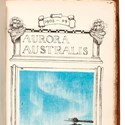
Manuscript map of Antarctica, executed in blue and red crayon on paper, showing several tracks relating to his 1914-16 expedition and signed by Shackleton at his farthest point south in 1909. It sold for £140,000 at Sotheby’s.
Ernest Shackleton’s Antarctic expedition of 1914-16 saw the loss of his ship, the Endurance, and months of drifting on ice flows before he and his 28-man crew set up a camp on Elephant Island.
There followed a remarkable open boat journey in the 23ft long whaler James Caird*, one in which Shackleton and a small crew sailed 800 miles to reach the whaling station on South Georgia, where he organised a rescue party and returned to save their marooned fellow crew members. All this is the stuff of polar legend.
Drawn, annotated and signed by Shackleton, a folding map of Antarctica that he drew up in 1918 to record those dramatic times was offered as part of a May 17-24 sale held by Sotheby’s (26/20/13.9% buyer’s premium) and sold for £140,000.
Towards the end of the First World War, Shackleton was appointed by the War Office to take charge of winter equipment in support of a north Russian expeditionary force, but in November of that year he sailed from Murmansk back to London on the cruiser HMS Dublin.
Shackleton was a seasoned lecturer and this map, inscribed to a DD Hirst “in remembrance of his assistance on H.M.S. Dublin”, may have been drawn to illustrate a talk that he gave during that voyage home.
Antarctic production
Sold at £80,000 was a copy of Aurora Australis, the first book printed and bound in Antarctica. Illustrated with lithographs and etchings by George Marston, printed by Ernest Joyce and Frank Wild, and bound by Bernard Day, it was produced during Shackleton’s Nimrod expedition of 1908-09.
One of those exercises intended to keep his men focused while over-wintering, it may originally have been intended for sale, but in the end the 100 or so copies produced were distributed amongst crew members or given to the expedition’s benefactors and friends.
This example bore a 1970 inscription by Frank Wild’s brother, Laurence, to his grandson, “To keep in memory of his Great-Uncle, Frank Wild, who made this book in the Antarctic”.
Sold at £70,000 was a somewhat stained Norwegian sledge flag that was used by Roald Amundsen on his numerous expeditions to both the North and South Polar regions in the years 1903-26.
* For a hundred years now the James Caird has been on display at Shackleton’s old school, Dulwich College in London.


















